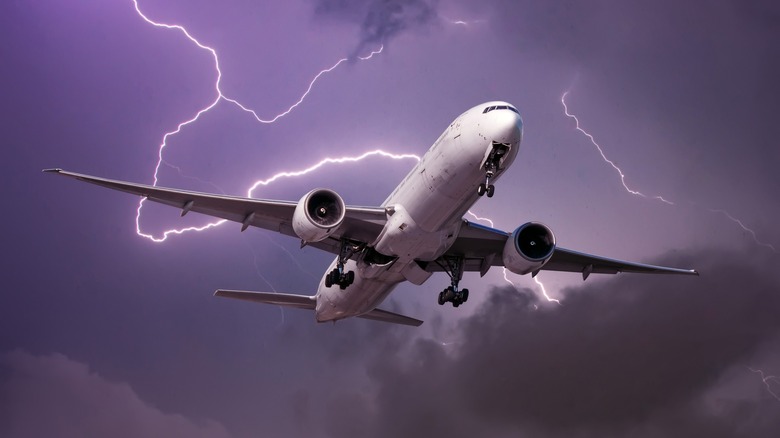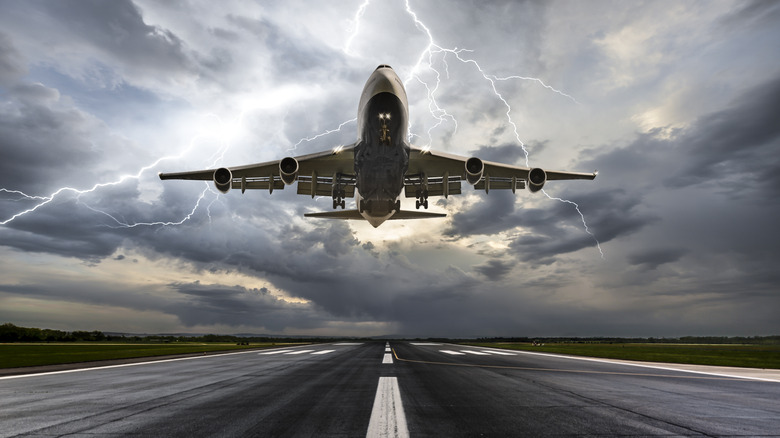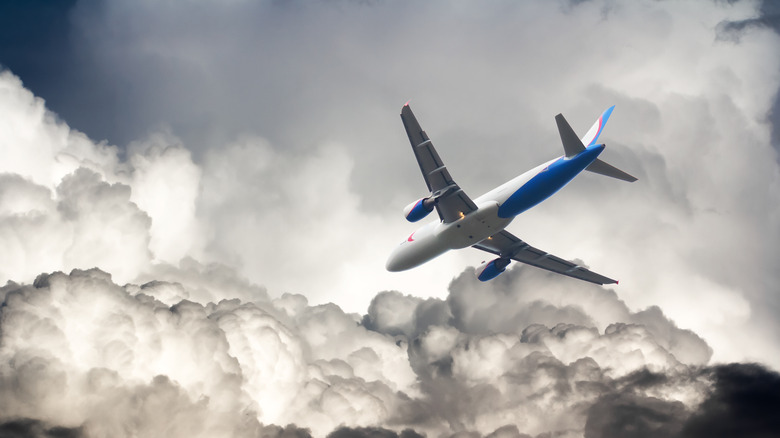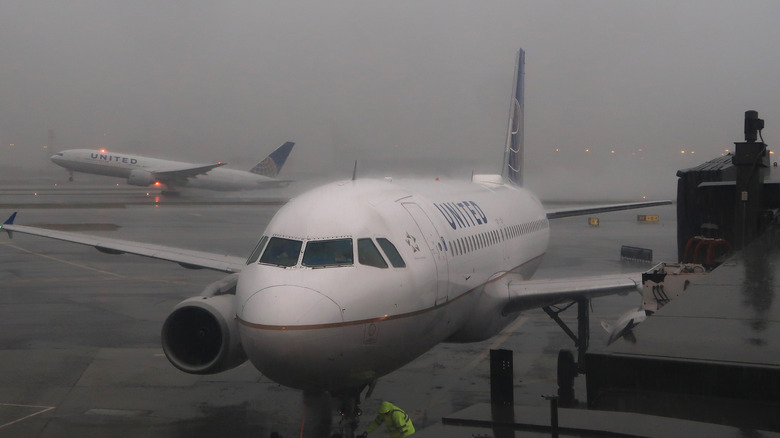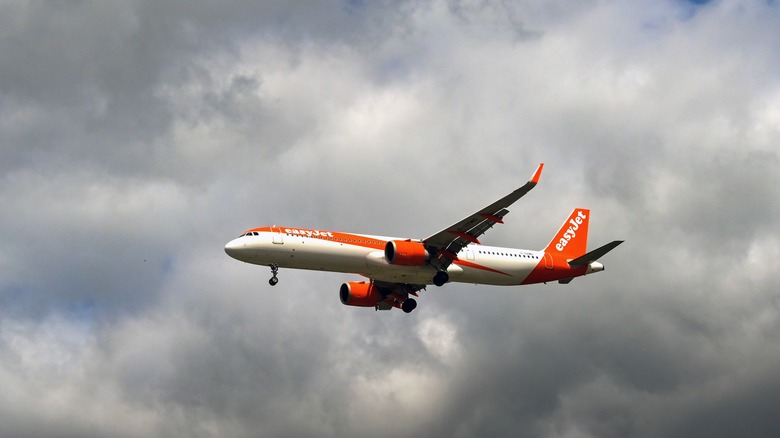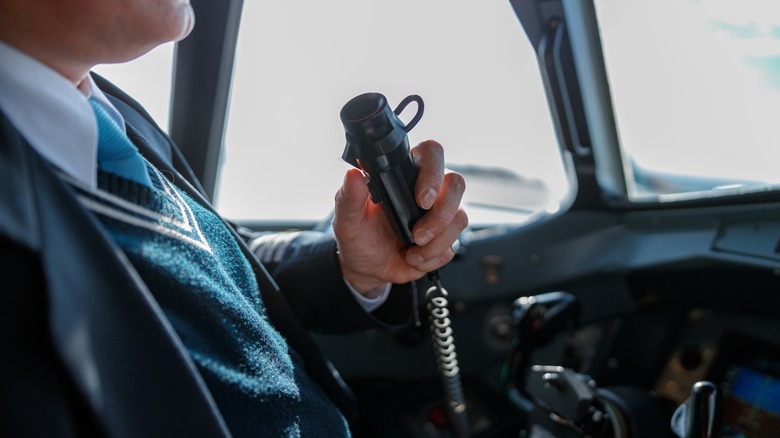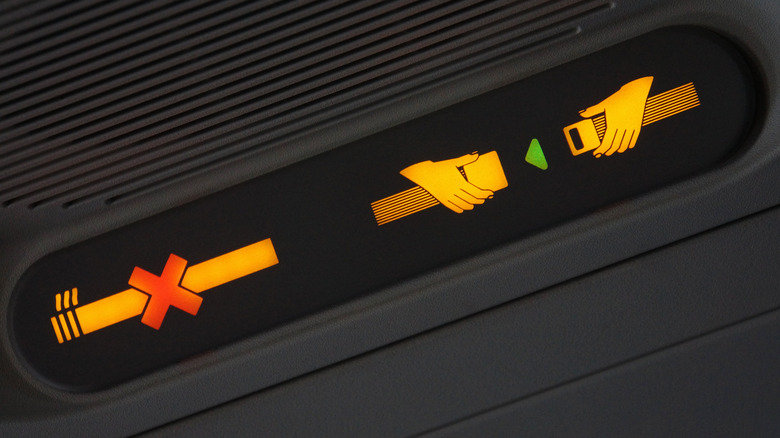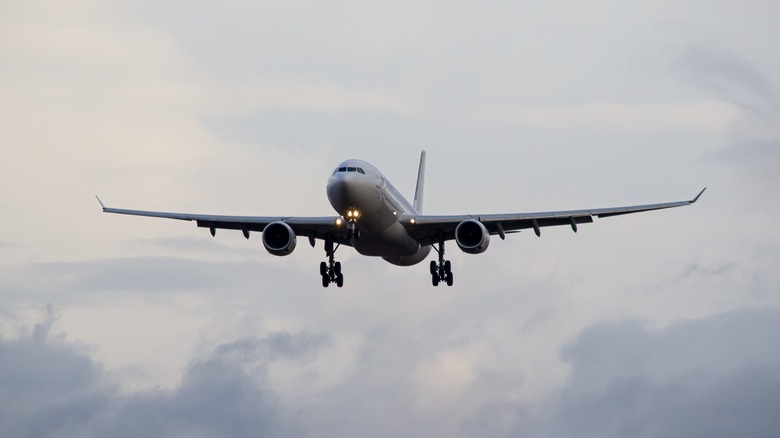Flying In And Avoiding Extreme Weather: How Pilots Handle Nature's Challenges
Almost everyone knows that airplanes are one of the safest ways to travel. But what isn't always clear is why this is the case, especially when aircraft can experience extreme weather and dangerous storms that are not common at ground level. Among the many things that passengers don't know about pilot's jobs is how much preparation goes into avoiding dangerous conditions.
SlashGear has previously spoken to a pilot about advances in AI for air travel and how that might affect flights in the future. Now, we have discussed the issue of bad weather and how pilots handle the challenges that Mother Nature can throw at an aircraft with two veterans of the industry. Gary Baumgardner is a commercial airline pilot with 18 years of experience, and Capt. Brandon Meadows is a veteran who flew for the U.S. Navy and is currently a private pilot. The pair helped to explain the training, procedures, and actions that everyone involved in each flight will go through to keep passengers safe and aircraft in the air.
Avoid bad weather from the get-go
The main strategy that pilots employ when it comes to bad weather is to simply avoid it in the first place. Pilots are trained to be risk averse, and that means flying into an area where adverse weather could affect the flight is something most would never purposely do. Speaking to SlashGear, Baumgardner explained that the aim when dealing with extreme weather is to go around it. "We will usually navigate around the weather," he said. "Especially weather that has convective activity. However, if we can't make it through extreme weather, we will either divert or turn around."
Similarly, according to Meadows, if a situation is deemed potentially harmful, then the aircraft will not carry on going forward. That could mean taking a different route, making a landing at a nearby airport, or even turning around completely and going back to where they came from. After all, the idea there is a safer part of the aircraft is a myth, so it's best to just avoid anything risky altogether.
When asked about the possibility of encountering unavoidable storms and particularly bad weather, Meadows explained: "If the weather cannot be avoided, and it's so bad that it's unsafe, then we do not go through it; we either land somewhere else that's close, or we turn around and go home if that makes more sense."
Aircraft are designed to be able to handle storms
If you've watched Hollywood films, you might think that any sort of storm poses a major threat to passenger jets. The truth is that the aircraft used by airlines are incredibly safe and specifically designed to be able to withstand bad weather. It is not uncommon for aircraft to be able to travel through thunderstorms, strong winds, and heavy rain without any ill effects. For example, the wings of an aircraft are flexible enough to move in turbulence without being damaged.
While lightning strikes might seem frightening, like modern cars, aircraft are not at risk from being struck — it actually a few times every year The fuselage of a passenger jet effectively works as a Faraday cage, directing the electrical current across the exterior of the vehicle. A conductive path may also be created using embedded fibers or special screens to ensure the charge travels in a certain direction. Sensitive equipment inside the aircraft also has surge protection so electrical currents from lightning strikes don't cause damage.
Every aircraft has to go through a meticulous testing regime to make sure that every single part is capable of undergoing the kind of stresses they will typically encounter in the air. They are also regularly treated with anti-icing chemicals to keep ice from forming in areas that might cause problems.
Pilots do a weather check before takeoff
Even before a passenger jet is in the air, pilots will be planning ahead and checking the weather. One of the important parts of their pre-flight checklist is to perform an official weather check. This in-depth process is more involved than simply loading up a weather app on a smartphone. Pilots have to rely on authorized data from the National Weather Service. This information is available through a variety of specialized apps as well as the official U.S. government aviation weather site.
The pre-flight weather check covers the entire route and destination, ensuring there are no nasty surprises waiting for along the way. If conditions around the airport aren't safe, the plane will not take off and pilots or air traffic control will ground the flight. Problems predicted for the journey will see the pilots work with air traffic control to plan detours and set a route that avoids any potential danger. Delays and cancellations may also be considered if the destination airport is expecting bad weather at the time the flight will arrive.
"Checking the weather consists of looking at from where the flight is departing, where the flight is landing, all the space in between, and the weather at an alternative airport at which we might land if the first choice for destination doesn't work out, either for unexpected weather or other reasons," said Meadows. "This is typically called the local weather, destination weather, and en route weather, respectively. All of these are analyzed for the times we will be at those places, as well as the weather within about an hour before and an hour after."
Stay in constant communication
Communication is a key skill for all members of the flight crew and especially pilots. Standard operating procedures (SOP) have been put into place to keep communication efficient and accurate, giving pilots the ability to convey their thoughts with each other and air traffic controllers. After all, in an emergency situation time is of the essence and precision is important, so pilots are trained specifically to use certain words and keep in constant contact when necessary.
When it comes to weather, air traffic controllers keep pilots updated on changes and forecasts. Speaking over radio, they will inform aircraft about potential storms and bad weather. They will also relay information from other pilots who may have experienced dangerous conditions that don't show up on radar. This keeps everyone in the air well informed about what is going on so they are as safe as possible.
"We also have radar from ATC and our own radar on our aircraft," said Baumgardner. "Pilots and ATC also coordinate with each other. Pilots can pass along weather to other pilots and ATC. For example, an aircraft 100 miles ahead of us might pass on that FL350 is pretty turbulent. ATC will relay this to us and we can make adjustments."
Plans, procedures, and checklists
While pilots generally take what Meadows calls a "commonsense approach to avoiding weather," there are all sorts of other things that they do to keep passengers safe and make sure aircraft are not damaged, too.
There are many plans, procedures, and checklists designed to keep pilots prepared and in control, regardless of the situation. In the case that something does go wrong, pilots can run through these checklists and find the relevant solution. This might include slowing the aircraft down so it experiences less stress and enabling or turning off certain systems so pilots have more direct control.
Speaking to inews, experienced pilot Martin Chalk discussed some of the other procedures that pilots follow during bad weather. These rules are in place to provide safeguards, such as having at least one pilot always wearing a seatbelt to prevent sudden changes causing injury. "As pilots, one of you is always strapped in, in order to make sure that if unexpected turbulence occurs, one of you is capable of continuing to fly in the plane," explained Chalk. "Personally, that never happened to me and it's very rare that a plane is knocked more than a few feet from where it should be."
Prioritize passenger safety and comfort
There's another reason that pilots go out of their way to avoid bad weather outside — the comfort and safety of passengers. Even if an aircraft could safely travel through a storm without suffering damage or being at risk of crashing, pilots will tend to go around anything that might cause discomfort for those onboard the flight. "We're trying to protect passengers from being injured as a result of being thrown about the plane, and passengers being hit by items that are thrown around the plane by the turbulence," said Chalk.
Far fewer people would be prepared to fly if they knew that they'd experience turbulence frequently, as even brief moments of being bumped around can be uncomfortable and scary. That's also why pilots take extra care to warn passengers about potential turbulence or conditions that might affect the plane, even if there isn't a noticeable effect. If you've ever flown and seen the seatbelt light come on or heard an announcement from the pilot about bad weather but then not felt anything, that's a good example of pilots playing it safe and preparing for scenarios that could potentially be dangerous.
Always prepare for the worst
Both pilots that spoke to SlashGear confirmed that it is rare for unexpected weather to suddenly appear. The weather systems on a plane and the communication procedures with air traffic control means that pilots are not caught off guard very often. But in the few times that it might happen, it is important that pilots are fully prepared for the worst-case scenarios. Pilots are specifically trained to be able to fly in turbulence, keeping the aircraft level and the flight smooth thanks to countless hours on the simulator.
An aircraft's autopilot system can also be incredibly useful in unpredictable weather. Whereas pilots may overcorrect during turbulence or in storm conditions where the jet is being jostled, the autopilot should be able to adjust with more nuance without any of the emotion or stress of a human pilot. According to Chalk, autopilot can ably handle most turbulence these days.
Thankfully, the best commercial aircraft also come equipped with a variety of instruments that help pilots navigate during low light and visibility. Instrument Landing Systems give three-dimensional guidance when an aircraft is approaching an airport so they can line up correctly with the runway even when it is not possible to see much out the cockpit screen. In-flight sensors and systems, such as radar, can also provide a way to avoid obstacles and other aircraft while staying on route. If ice and hail poses a problem, pilots can switch on electrical de-icing systems designed to heat up the wings and other essential parts to stop ice forming.
